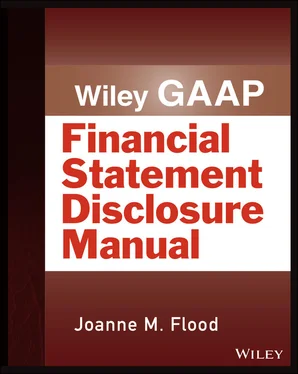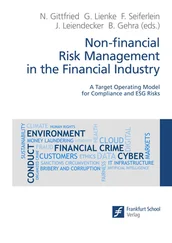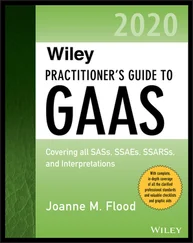2 Nature of distribution approach. The entity classifies distributions based on the nature of the investee's activates that generated the distribution. If the information necessary to implement this approach is not available, the investor should use the cumulative earnings approach and report a change in accounting principle.(ASC 230‐10‐45‐21D)
More Than One Class of Cash FlowsIf a cash receipt or payment has aspects of more than one class of cash flows, entities should apply the guidance in ASC 230 and any other relevant Topic. If there is no specific guidance, classify separately each cash source or use based on the nature of the underlying cash flow. (ASC 230‐10‐45‐22) When a cash receipt or payment has aspects of more than one cash flow category that cannot be separated, it should be in the category that is likely to be the predominant source of cash flows. (ASC 230‐10‐45‐22A)
Discontinued OperationsThe disclosure requirements relevant to discontinued operations and related cash flows can be found in ASC 205‐20‐50‐5B(c). (ASC 230‐10‐45‐24A)
Noncash Investing and Financing ActivitiesThe effects of investing and financing investing or operating activities that do not result in receipts or payments of cash should be reported in a separate schedule immediately following the statement of cash flows or in the notes to the financial statements in narrative or tabular format. (ASC 230‐10‐50‐3) This is to preserve the statement's primary focus on cash flows from operating, investing, and financing activities. Examples of noncash investing and financing activities include:
Converting debt to equity.
Acquiring assets by assuming liabilities, such as buying a building by incurring a mortgage to the seller.
Obtaining a right‐of‐use asset in exchange for a lease liability.
Obtaining an asset by receiving a gift.
Exchanging noncash assets or liabilities for other noncash assets or liabilities.(ASC 230‐10‐50‐4)
If a transaction is part cash and part noncash, only the cash portion is reported in the body of the statement of cash flows. (ASC 230‐10‐50‐5) If the entity has only a few noncash transaction, they may be included on the same page as the statement of cash flows. If not, the transactions may be reported elsewhere in the financial statements with a clear reference to the statement of cash flows. (ASC 230‐10‐50‐6)
Reporting Hedging TransactionsThe cash flows resulting from derivative instruments that are accounted for as fair value hedges or cash flow hedges may be classified as the same type of cash flows as the hedged items provided that the accounting policy is disclosed. There is an exception for hedges considered to have a financing element at inception. If the derivative instrument used to hedge includes at inception an other‐than‐insignificant financing element, all cash inflows and outflows associated with the derivative instrument are reported by the borrower as cash flows from financing activities. A derivative that at inception includes off‐market terms, or requires up‐front cash payment, or both, often contains a financing element. A derivative instrument is viewed as including a financing element if its contractual terms have been structured to ensure that net payments will be made by one party in the earlier periods of the derivative's term and subsequently returned by the counterparty in the later periods (other than elements that are inherent in at‐the‐money derivative instruments with no prepayments). If for any reason hedge accounting for an instrument is discontinued, then any cash flows subsequent to the date of discontinuance are classified consistent with the nature of the instrument. (ASC 230‐10‐45‐27)
Other Topics with Cash Flow SubtopicsSome other Topics in the Codification have Subtopics on cash flows. Those should be reviewed for additional guidance and include:
ASC 830‐230, Foreign Currency Matters
ASC 926‐230, Entertainment—Films
ASC 942‐230, Financial Services—Depository and Lending
ASC 946‐230, Financial Services—Investment Companies
ASC 958‐230, Not‐for‐Profit Entities
ASC 970‐230 Real Estate—General
ASC 978‐230 Real Estate—Time‐Sharing Activities(ASC 230‐10‐05‐03)
Format of the Statement of Cash Flows
The statement may be prepared using either the direct or the indirect method of presenting net cash from operating activities.
Direct method—presents major classes of gross cash receipts and payments and their sum.
Indirect method—reconciles net income and net cash flow from operating activities
The FASB has long expressed a preference for the direct method. Conversely, the indirect method has always been vastly preferred by preparers.
The Direct MethodThe direct method shows the items that affected cash flow during the reporting period. Cash received and cash paid are presented, as opposed to converting accrual‐basis income to cash flow information. At a minimum, entities using the direct method are required to report separately the following classes of operating cash receipts and payments:
1 Cash collected from customers, including leases, licensees, and the like
2 Interest and dividends received
3 Other operating cash receipts
4 Cash paid to employees and other suppliers
5 Interest paid, including the portion of the payments made to settle zero‐coupon debt instruments attributed to accreted interest related to the debt discount
6 Income taxes paid
7 Other operating cash payments(ASC 230‐10‐45‐25)
Entities are encouraged to make further breakdowns that would be useful to financial statement users. For example, disaggregating number 4 above, “cash paid to employees and suppliers,” might reveal useful information.
The direct method portrays the amounts of cash both provided by and used in the reporting entity's operations, instead of presenting net income and reconciling items. The direct method reports only the items that affect cash flow (inflows/outflows of cash) and ignores items that do not affect cash flow (depreciation, gains, etc.) as in the indirect method described below. The general formats of both the direct method and the indirect method are shown below.
The direct method allows the user to clarify the relationship between the company's net income and its cash flows. For example, payments of expenses are shown as cash disbursements and are deducted from cash receipts. In this way, the user is able to understand the cash receipts and cash payments for the period. The information needed to prepare the operating activities section using the direct method can often be obtained by converting information already appearing in the statement of financial position and income statement. Formulas for conversion of various income statement amounts for the direct method of presentation from the accrual basis to the cash basis are summarized below.
The Indirect MethodThe indirect method is the most widely used presentation of cash from operating activities, because it is easier to prepare. It focuses on the differences between net income and cash flows. The indirect format begins with net income, which is obtained directly from the income statement. An entity using the indirect method to provide information about major classes of operating cash receipts and payments must report the same amount of net cash flow from operating activities indirectly. This is done with an adjustment to net income to reconcile it to net cash from operating activities by removing:
The effects of all deferrals of past operating activities, and
All items included in net income that do not affect cash provided for or used for operating activities.(ASC 230‐10‐45‐28)
Читать дальше












